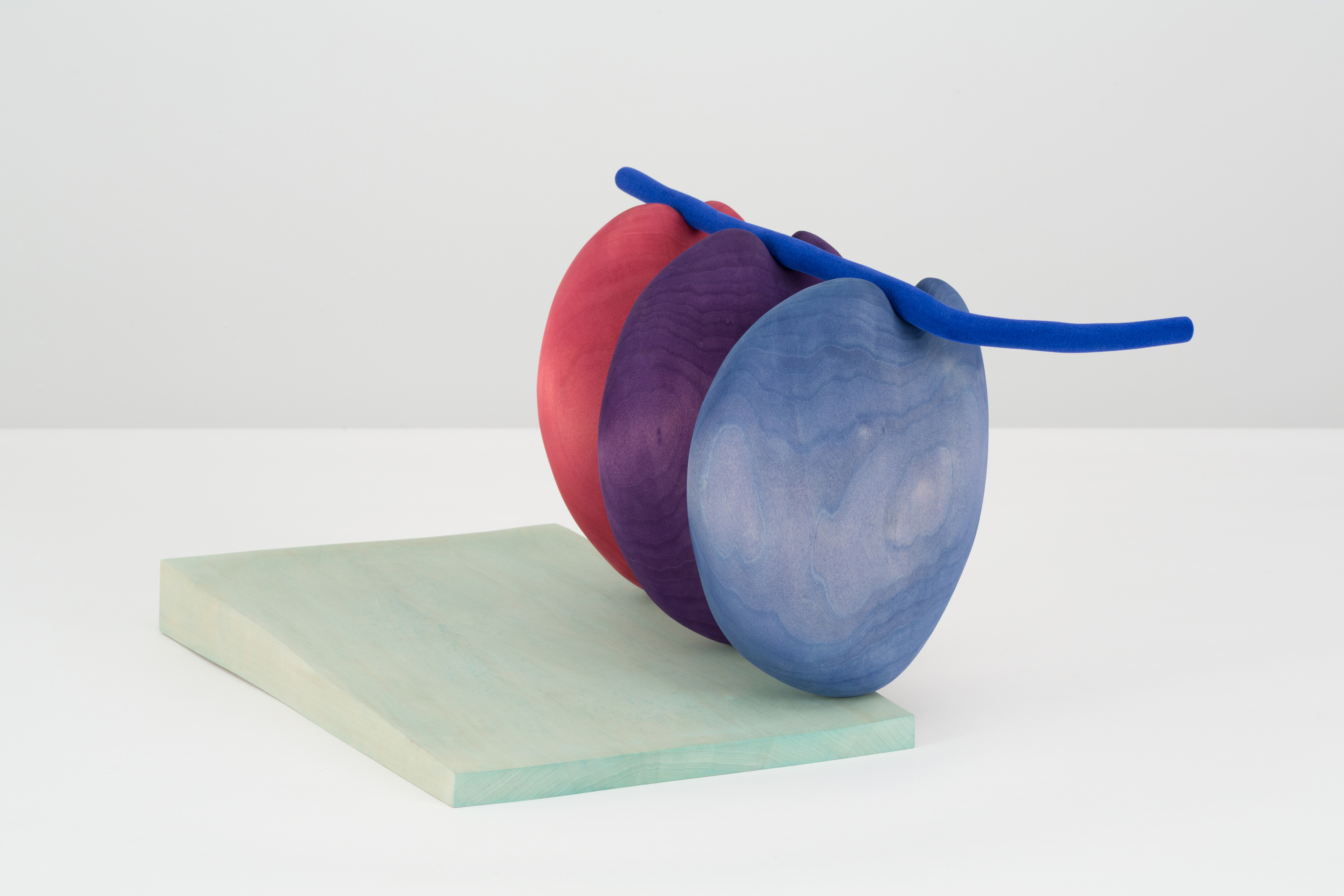Casey Kaplan


Matthew Ronay
Permeable Solid: Matthew Ronay’s Betrayals of and by the Body
June 10, 2019
by Wallace Ludel
Self-pollinating flowers. Throwing up on the F train. Dissecting a cadaver. Losing your virginity in the woods. Welcome to the boundless world of Matthew Ronay’s first solo show at Casey Kaplan. Though the body and its countless permeable barriers are conjured, all allusions to it are strictly implicit and manifest themselves through the sculptures’ organic, winding forms—their enmeshing of inner and outer, and their conflating of negative and positive spaces. While none of the work is the least bit figurative, it nevertheless invokes our fleshy, molecular selves. Think of the early biomorphic Surrealists like Yves Tanguy; think of Jean (Hans) Arp and Fernand Léger’s Objects in Space series (late 1920s and early 1930s); but also think of The Jetsons or the cross-section of a Jawbreaker. Despite their corporeal readings, the works couldn’t be more graceful or a finer celebration of material and craftsmanship.
At the gallery’s entrance, ten sculptures rest on a thirty-six-foot-long plinth—it’s like walking into a cocktail party that’s about to erupt into an orgy. Each work is genderless, hermaphroditic, and you could swear that they’re growing—as if, were you to see the show a week later, they’d be larger and would have spread through mitosis into further objects. The works, all 2018, are relatively small and relentlessly beautiful, with titles that range from overtly biological (Extended Phenotype), to strictly atmospheric (An Autumn), to somewhere in between (Ovulated Anaphora). The large majority of the work is made from basswood, a material Ronay has used since 2011; and they make clear an absolute mastery of and revelry in it. Which is to say, he makes the impossible look effortless.
In Extended Phenotype, one central form floats above the plinth, while five other units fit perfectly in it and extend downward like ball-and-socket joints. Each form is a different shade of red or orange and evidences unique, hand-carved textures. In The Small Circle of Living Matter Inside a Crowd of Tiny Scars, something intestine-like fits perfectly inside something coral-reef like, nestled in and reaching out. Despite Ronay’s work existing in a world beyond logic, each decision seems to make perfect sense, and each sculpture becomes a small fact to be enjoyed and slurped down like an oyster.
In photographs they look like clay, or better yet Play-Doh, thanks partly to the medium-defying dynamic forms they assume, and partly to the electric saturation of their colors. The palette is so vibrant it is as if they could illuminate a dark room, and the mingling of these colors and forms recalls sculptors like Ken Price or Ron Nagle, both of whom do work in clay. It isn’t until you see the works up close and recognize that the dyes and gouache used to color them leave the woodgrain visible that the utter paradox of these objects being made out of wood, and the extent of Ronay’s skill, really becomes apparent.
Another reward is the knowledge that Ronay achieves these color palettes in spite of his suffering from deuteranomaly, a.k.a. red-green colorblindness. (This is a type of colorblindness that’s dear to me because my father suffers from it, and I’ve always been told that if I have a son, he likely will too.) Like the years Claude Monet spent painting with cataracts, it is hard to understand the depths to which this may or may not affect the work. Ronay’s wife, Bengü, a graphic designer, helps him determine what colors to use (just as my mother helps my father pick out shirts from The Gap).
Tracking the basswood’s grain and knots, you discover that what seem to be disparate, conjoined forms are often carved from a single block of wood. Ronay carves in and frees them from singular pieces of raw material à la Michelangelo and his Carrara marble. Through preserving the wood’s integrity while transforming it so completely, a precarious space is created in the tension between the easy identification of material and the transcendence of it, and the work basks in this confounding middle ground. This is alchemy. This is the source of the magic.